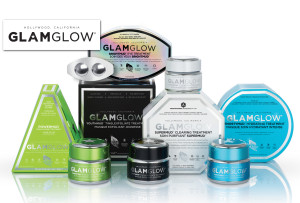Oh the sweetness of dark chocolate and strawberries. But are we in danger of lead poisoning when partaking in our favorite sweet treat?  There has been an increase in news coverage and reports of our chocolate containing amounts of lead. So what is really going on with our chocolate bars?
There has been an increase in news coverage and reports of our chocolate containing amounts of lead. So what is really going on with our chocolate bars?
After doing some research to find out more on the topic, we found mixed reviews on the issue. If you have a sweet tooth, then you probably found satisfaction in learning the latest news about how chocolate is good for your health, justifying your favorite candy bar or nugget, but on the flip side of this news comes an alarming report of lead being found in that same chocolate that was suppose to boost your health.
A Recent Report
As You Sow, conducted an independent study on 50 different chocolate products and found that 35 of the 50 had levels of toxic lead! In addition to detecting lead, they also reported that many were above the standard health limit threshold of California’s Safe Drinking Water and Toxic Enforcement Act of 1986 (Proposition 65).
The Impact
With the latest news of Flint, Michigan, one can only hope that our favorite snack isn’t poisoning us every time we indulge, but more importantly, what about our children?  There have been recent studies indicating that lead contamination is linked to neurological impacts in children. In fact, the claims so strong that many actions were taken resulting in the removal of lead from children’s jewelry and other classroom items.
There have been recent studies indicating that lead contamination is linked to neurological impacts in children. In fact, the claims so strong that many actions were taken resulting in the removal of lead from children’s jewelry and other classroom items.
So how much lead is too much lead?  Well most can agree that any level of lead exposure is bad, CNN reported, “Under federal guidelines, small children shouldn’t have more than 6 micrograms of lead a day from candy. For adults, the limit is higher.”
Well most can agree that any level of lead exposure is bad, CNN reported, “Under federal guidelines, small children shouldn’t have more than 6 micrograms of lead a day from candy. For adults, the limit is higher.”
What Can You Do
Knowing the risk of lead in your chocolate is the first step in understanding the health risks of eating this tasty treat, but what are some of the other actions you can take to reduce your lead exposure, particularly in the chocolate industry?
Research Companies – making sure you are eating chocolate from companies that follow strict guidelines in the production, manufacturing and shipment of your chocolate could help reduce your lead exposure.  Also taking time to research companies based on their recent toxicity level reports will give you an idea about who to purchase from.
Also taking time to research companies based on their recent toxicity level reports will give you an idea about who to purchase from.
Find Sweet Alternatives – finding an alternative sweet is probably the best and easiest way to satisfy your cravings. If you love chocolate, try alternatives that can crave your sweet tooth.
- Almond Butter
- Fruits
- Carob
- Nuts
- Chocolate Soy Milk
Go Organic – finding companies that are more of a “home grown” operated facility may also reduce the risk of excess levels of lead in your chocolate as they may offer better soil, facilities and packaging procedures.
Many of our foods contain levels of harmful ingredients, and while finding lead in chocolate is not the end of all chocolate factories in the world, knowing that one more item on our food list contains possible harmful ingredients will arm us with better information and options when choosing what types of foods we include in our meals and which ones to avoid. While we expect those companies that were identified with high levels of lead to address the reports and make proper changes to their manufacturing process, having an awareness to the overall production of our food and possible contaminates is an important part of living a healthy life.








Leave a Reply